Welcome to Matrix Education
To ensure we are showing you the most relevant content, please select your location below.
Select a year to see courses
Learn online or on-campus during the term or school holidays
Learn online or on-campus during the term or school holidays
Learn online or on-campus during the term or school holidays
Learn online or on-campus during the term or school holidays
Learn online or on-campus during the term or school holidays
Learn online or on-campus during the term or school holidays
Learn online or on-campus during the term or school holidays
Get HSC Trial exam ready in just a week
Get HSC exam ready in just a week
Select a year to see available courses
Science guides to help you get ahead
Science guides to help you get ahead
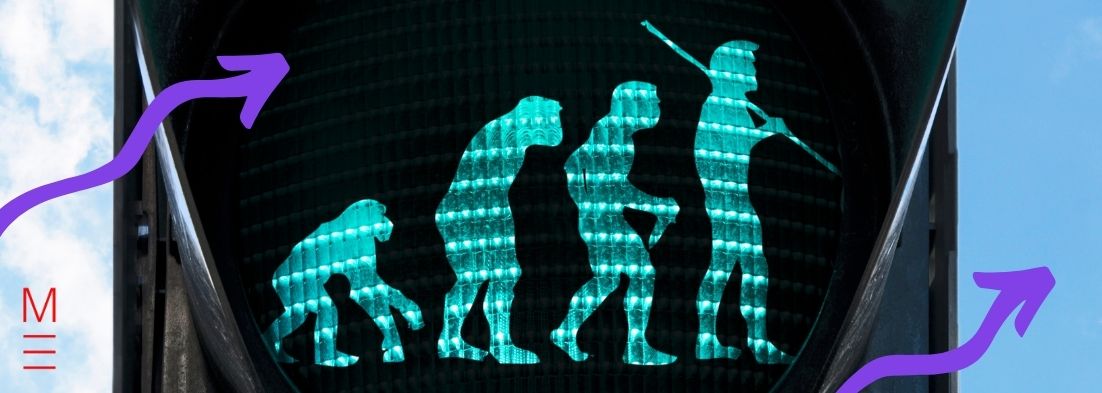
In this module, you will revisit and expand on Module 3, Biological Diversity. This includes Darwin’s Theory of Evolution by Natural Selection and the types of evidence that supports this theory.
Since evolution promotes a change in species over time, selection pressures in their environment drive species to adapt in order to better suit the conditions they live in.
This can be broken down into the following topics:
Recall that evolution requires variation within the population and then a selection pressure that determines which individuals survive.
A selection pressure can be explained as any factor that promotes change in characteristics and adaptations of species that helps them survive.
Selection pressures can be biotic or abiotic.
Note that populations/species evolve over time, not individuals!
Abiotic selection pressures include light availability, salinity and nutrient availability in soil.
For example, the availability of light acts as a selection pressure on rainforest plants.
Some plants species such as epiphytes acquired the ability to grow on top of other plants in order to obtain sunlight for their survival.
Biotic selection pressures include competition, predation and sexual selection.
For example, sexual selection results in the bright colours and large feathers seen in male birds.
Females are more likely to mate with a male that produces an impressive display of these characteristics.
The effect of selection pressures can be observed in modern-day examples of evolutionary change.
In 1935, cane toads were introduced to Australia to control cane beetles. Cane toads are adaptable and cause environmental damage due to their ability to poison any predators that try to consume them.
This has acted as a selection pressure on some snake species in Australia resulting in smaller head size and resistance to toad toxin.
Change within the toad population has also been observed.
Toads with longer legs have an advantage and spread faster across Australia invading new areas and leaving the slow toads behind.
These toads at the ‘invasion front’ breed with each other producing new generations of long-legged toads.
Our inspirational HSC experts will make challenging content accessible and guide you through difficult practice questions to help you ace your next exam! Learn more now.
Don't just memorise. Understand.
Expert teachers, weekly quizzes, one-to-one help! Ace your next Biology assessment with Matrix+ Online.
For organisms to survive, they need to adapt well to the conditions they live in. In this topic, you will use secondary sources to explore adaptations in response to selection pressures.
The three types of adaptations are structural, physiological and behavioural.
Charles Darwin observed adaptations of species on his journey aboard the HMS Beagle.
He spent many years surveying the coasts of South America and exploring the islands including the Galapagos where he recorded and collected the species he saw.
His observations lead him to develop the Theory of Evolution by natural selection.
From his observations, he concluded that different continents with similar environments contained similar-looking species.
He also found that extinct animal fossils in South America were similar to modern species indicating that these species had in fact changed over time.
As Darwin explored the Galapagos islands, he noticed that tortoises and finches on different islands had different adaptations suited to the environmental conditions on that island.
Darwin observed that finches on different islands had different beak sizes and shapes depending on the food available on each island.
He suggested that one species of finch arrived on the Islands and then different populations adapted over time to better suit the available ecological niches.
This process is referred to as divergent evolution which we will cover in more depth in the next topic.
Darwin also surveyed Australia and observed similar features between Australian marsupials and placental mammals of South America.
He noticed that the Australian platypus and rat-kangaroo have similar physical traits to the rabbit and water-rat from America.
Although these animals lived in different areas, they were exposed to similar environments – ie. selection pressures that would select for similar traits such as body shape, diet and behaviour.
Marsupial and placental mammals illustrate evolutionary convergence where species not closely related resemble each other as they fill similar niches.
Based on these observations Darwin theorised that:
Biological diversity (biodiversity) is the variety of all living species including animals, plants and microorganisms.
There are three types of Biodiversity:
The Theory of Evolution by natural selection suggests a mechanism for the diversification of life: natural selection, in which heritable traits that help organisms survive and reproduce become more common in a population over time.
A tree of life is used to show species relationships and how they evolved from a common ancestor, indicated when two branches meet.
The earliest organisms such as cyanobacteria were simple organisms and evolution by natural selection resulted in increased complexity of species as new favourable characteristics evolved.
During your class, you will explore the timeline of events of early life and diversification of species in general.
For example, the Earth’s atmosphere changed from anoxic (no oxygen) to oxic (oxygen presence) as a result of oxygen-producing species.
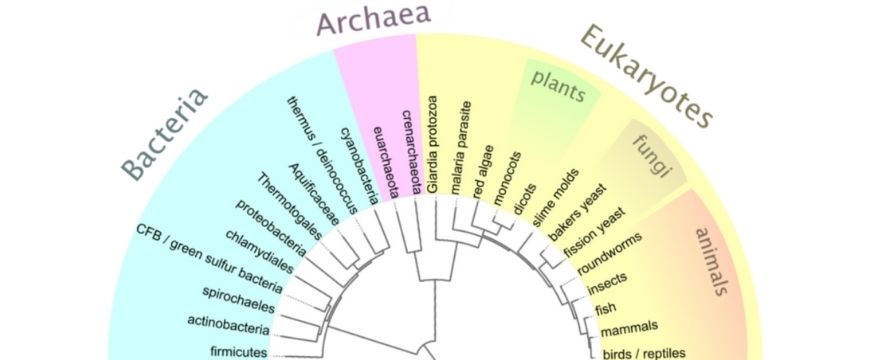
Since evolution occurs gradually over millions of years, the changes are very small scale and are referred to as microevolution.
The evolution of the horse is a great example of microevolution covered in this module.
Over millions of years, selection pressures such as food availability and predation resulted in microevolution of horse molars and toes.
Horses evolved larger molars to efficiently breakdown grass and the ability to run on a single toe allowed them to quickly outrun predators.
Both Charles Darwin and Alfred Russel Wallace independently proposed that evolution occurs as a result of natural selection that selects for the fittest individuals.
The different ways in which species evolve include divergent and convergent evolution.
Divergent evolution is the process where two or more closely related populations of a species become less similar over time.
Divergence can occur to a point where related populations evolve into different species in a process known as speciation.
The driving factor of divergent evolution includes different populations of species being exposed to different selection pressures.
There are two types of speciation:
Allopatric speciation occurs when populations are physically or geographically separated causing them to diverge independently of one another which gives rise to separate species.
This is seen in Californian salamanders.
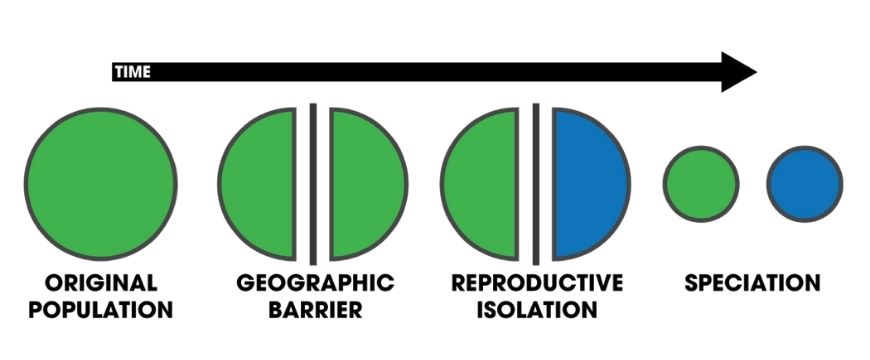
Sympatric speciation occurs when species living in the same physical and geographical area diverge into separate species due to behavioural changes in response to a selection pressure such as competition for food.
Cichlid fish have evolved from a common ancestor into separate species even within the same lake as they focused on different foods to avoid competition.
Some populations adapted to eat insects, algae or other fish.
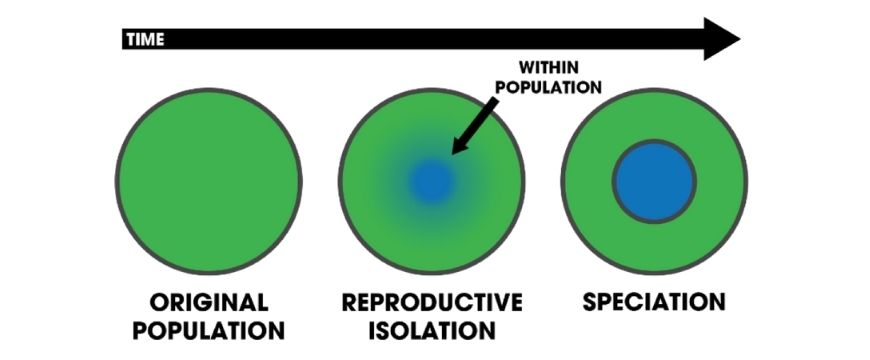
When divergence creates many new distinct species from a common ancestor such as in Darwin’s Galapagos finches, the process is referred to as adaptive radiation.
Convergent evolution on the other hand is the process where unrelated species evolve to become more similar structurally or behaviourally due to exposure to similar selection pressures.
An example is seen in bats, birds and dragonflies.
These species all independently evolved wings as a result of exposure to similar environmental pressures.
This provides an advantage to fill an ecological niche where competition is low.
While Darwin Wallace theory of gradual evolution by natural selection remains relevant, scientists have made some modifications to this theory.
One such modification is the punctuated equilibrium proposed by Eldredge and Gould. Punctuated equilibrium predicts that evolutionary change occurs in short periods of time in response to sudden changes in the environment leading to speciation.
The diagram below compares the evolution of three species according to the two different theories.
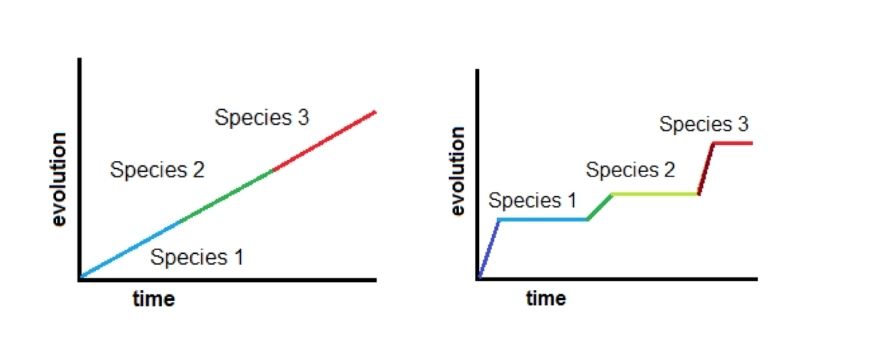
Once again, you will use secondary sources to analyse various types of evidence supporting Darwin and Wallace’s Theory of Evolution by Natural Selection.
Evidence of evolution comes from multiple areas including Palaeontology, comparative anatomy, embryology, biogeography and Biochemical evidence.
Palaeontology refers to the study of fossils.
Fossils are the preserved remains of organisms or their traces, dating from the distant past.
Trace fossils such as footprints of species indicate activity of the species, whereas, body fossils are the remains of the species.
In order for fossils to form and be discovered, specific conditions are required following the death of an organism including:
Body remains of transitional fossils provide strong evidence of evolution.
A transitional fossil is a half-way fossil showing a transition between two different evolutionary groups and the accumulated adaptations over a long time period.
The Archaeopteryx is an important transitional fossil that has features of both birds and reptiles suggesting that these groups shared a common ancestor before undergoing divergent evolution.
In your class, you will go through various different examples of geological evidence reflecting the conditions on the early earth.
Relative dating is used to determine the relative age of different rock layers e.g. which layers are older or younger than each other.
Absolute dating is used to determine a precise age of rocks and fossils by using radioisotopes within them and measuring how much they have decayed.
Common isotopes used include Carbon-14 and Potassium-40. Carbon-14 has a half-life of 5730 years and is useful for dating younger materials, while Potassium-40 has a half-life of 1.25 billion years which makes it more useful for dating old materials.
Using known isotope decay rates, you will look at different techniques to calculate the absolute age of a sample.
Homologous structures in different species also provide evidence for the evolution of species from a common ancestor.
The five-fingered limb of vertebrates is known as the pentadactyl limb and it has the same basic structure and arrangement in different species.
This basic design is modified to suit the needs of the species.
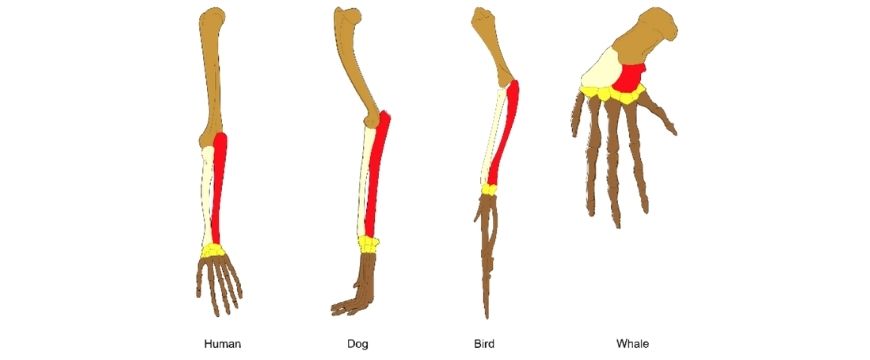
Early-stage embryos can be difficult to distinguish from each other as they develop similar tail, gill slits and arm buds.
This similarity between early-stage embryos of different species suggests that different groups have divergently evolved from a common ancestor.
The geographic distribution of organisms on Earth follows patterns that are explained by evolution.
Biogeography is the study of the distribution of species in geographic space and through geological time.
Gondwana landmass suggests that continents were once joined together before they drifted apart.
The modern distribution of similar species on different continents provides evidence of continental drift.
As technology advanced, scientists have been able to conduct biochemistry studies (such as DNA analysis) to analyse how closely related organisms are.
The more closely related the organisms, the higher the similarity in their biochemical makeup suggesting that they evolved from a common ancestor.
The presence of DNA in all species is in itself evidence that they evolved from a single ancestor that also contained DNA.
You will look at modern-day examples that demonstrate evolutionary change, such as cane toads (covered earlier) and the development of antibiotic-resistant bacteria.
The development of antibiotic resistance in various strains of bacteria is an example of modern evolutionary change.
Based on the Darwin/Wallace theory of evolution, the antibiotic acts as a selection pressure on bacteria.
A natural variation in the population of bacteria occurs where some bacteria are naturally resistant to antibiotics while others are not.
The bacteria with favourable antibiotic-resistant traits will survive and reproduce (through binary fission) leading to the development of a new strain of antibiotic-resistant bacteria.
© Matrix Education and www.matrix.edu.au, 2025. Unauthorised use and/or duplication of this material without express and written permission from this site’s author and/or owner is strictly prohibited. Excerpts and links may be used, provided that full and clear credit is given to Matrix Education and www.matrix.edu.au with appropriate and specific direction to the original content.